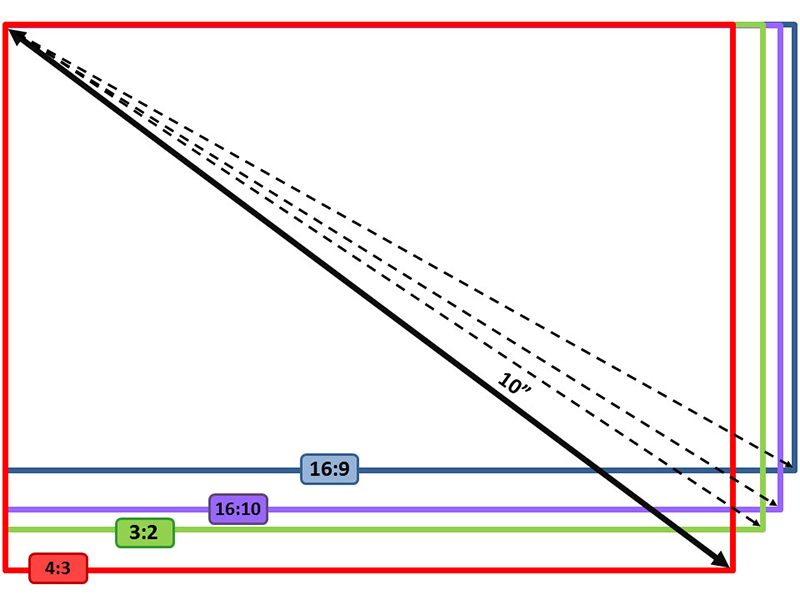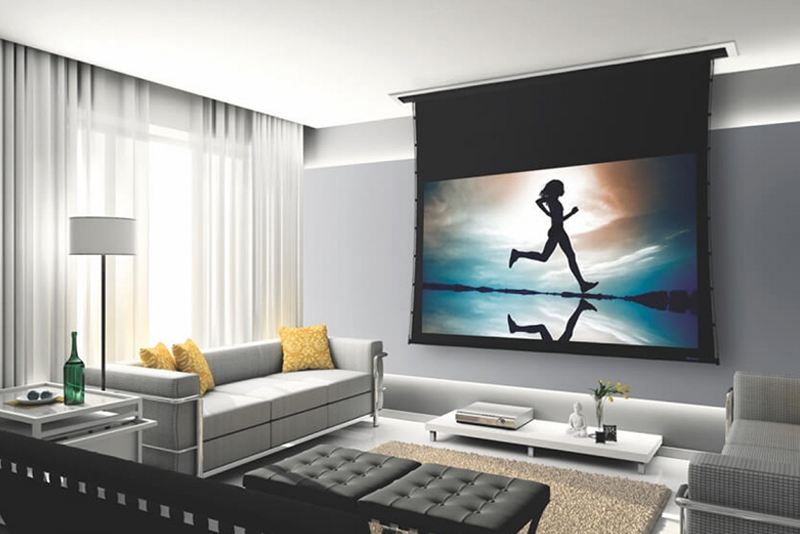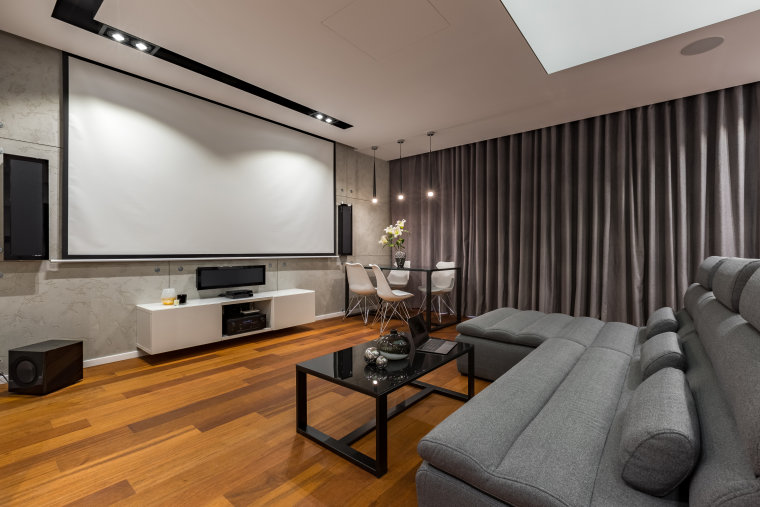The projected formats of projectors are determined by the specific aspect ratio of the screen. Aspect ratio is the partial ratio between the width of a video image and its height. The two most common home video aspect ratios are 4 : 3 (also known as 4 x 3, 1,33 : 1, or standard) and 16 : 9 (16 x 9, 1,78 : 1, or widescreen). All the older TVs and computer monitors you grew up with had a square 4 : 3 shape - just 33 percent wider than it was tall. On the other hand, 16 : 9 is the native aspect ratio of most HDTV programs - it's 78 percent wider than it is tall, or one-third wider than 4 : 3.

What is the best aspect ratio for you?
Today, the most commonly sold home theater aspect ratio screens are 16 : 9 Widescreen HDTV and 4K UHD and now the ever-growing 2,35 : 1 CinemaScope. HDTV 16 : 9 or 4K UHD 16 : 9 aspect ratio screens are a perfect match for today's HD, Full HD or 4K UHD projectors for home theater or multipurpose business use.

To determine what aspect ratio is best for you, consider the following:
- If you're building a dedicated home theater room that's primarily for watching movies, we suggest a 2,35 : 1 Cinema aspect ratio screen, as that's where most movies are usually shot. However, when viewing 16 : 9 and 4 : 3 aspect ratio content on a Cinema 2,35 : 1 projection screen, you will have black lines projected on the left and right sides of the image.
- If you are buying a projection screen for a TV room or primary viewing of HDTV channels and video game content, then we suggest a 16 : 9 projection screen. However, when watching 2,35 : 1 movies, you'll have black lines above and below the projected image (generally less obtrusive than the oppositely generated side bars). When viewing 4 : 3 content, you will have black lines around the sides of the projected image.
- If you are buying a projector screen for a conference room, auditorium or anywhere where computer monitors will be displayed, then we recommend the 16 : 10 Widescreen PC format, WXGA 1280 x 800 and WUXGA 1920 x 1200 resolutions. When watching 2,35 : 1 movies, you will have black lines above and below the projected image or on the sides when viewing 16 : 9 and 4 : 3 content.
- If you are buying a projection screen for a classroom, lecture hall or study room where a more flexible solution is needed to accommodate many formats, then we recommend a 1 : 1 or 4 : 3 square format, without black borders. With a 1 : 1 or 4 : 3 projector screen, you can simply drop the screen to the appropriate position of the format you are displaying and move the projector backwards or forwards, similarly, as to adjust the image.
1 : 1 (SQUARE)
The square format is 1 : 1 - this format was most commonly used for slideshows and much older media content. And the square 1 : 1 projector screen can be moved down or up to simulate widescreen/HDTV or video viewing formats. This makes the 1 : 1 square format ideal for greater flexibility of use and also for more portable applications.

4 : 3 (VIDEO – SVGA AND XGA RESOLUTIONS)
Also called 4 : 3 XGA or SVGA format. This ratio is becoming a thing of the past, as 16 : 9 HD, Full HD and 4K UHD dominate both content and TVs, professional screens and projectors. Many classic films were shot in this aspect ratio.
The 4 : 3 aspect ratio for standard television has been used since the beginning of television and is used for many computer monitors. 4 : 3 is the aspect ratio established by the Academy of Motion Picture Arts and Sciences as a standard after the appearance of optical sound on film. If TV could accommodate this aspect ratio, movies that were previously shot on film could be satisfactorily watched on TV in the early days of the medium (ie the 40s and 50s). As movie theater attendance declined, Hollywood created widescreen aspect ratios to differentiate its industry from television.

16:9 (WIDE SCREEN, HDTV, FULL HD AND 4K UHD)
Also called 16 : 9, High Definition, HDTV, Full HD, Widescreen and 4K UHD. Ideal for HDTV channels, DVDs and BlurAY. It is an international standard HDTV format used in the United States, Australia, Japan and Canada, and in Europe on PALplus satellite and non-HD widescreen television (EDTV). The 16 : 9 aspect ratio was a compromise between the US and UK 35mm widescreen standard (1,85 : 1) and the 35mm European widescreen standard (1,66 : 1).
This is now the standard aspect ratio in the US, EU and everywhere in the world and all HD, Full HD and 4K UHD projectors natively project in this aspect ratio. It's also one of the most popular choices for home theater and media spaces when sports and gaming take precedence over watching movies.

16: 10 (PC WIDE SCREEN, MONITOR/DISPLAY - WXGA AND WUXGA)
Also called 16 : 10, PC widescreen, computer monitor/display, or tablet widescreen. This 16 : 10 format is commonly used on computer monitors and is now more popular in certain resolutions of laptops, notebooks and tablets. Slightly narrower and taller than typical 16 : 9, the 16 : 10 aspect ratio fits common widescreen projector resolutions such as WXGA (1280 x 800), WXGA+ (1440 x 900), WSXGA+ (1680 x 1050) and WUXGA (1920 x 1200).

2.35 : 1 (CINEMASCOPE, CINEMA FORMAT)
This is the pre-1970 35mm anamorphic standard used by CinemaScope ("Scope") and early Panavision. The anamorphic standard has changed subtly so that modern anamorphic production is actually 2,39 (2,40 : 1), but is still often referred to as 2,35 because of the old convention.
Most major release movies use this aspect ratio, and this is why most people choose this aspect ratio when building a dedicated home theater where watching movies balances TV, sports and games. This aspect ratio is much wider than HDTV 16 : 9.

If you still do not know if you are choosing correctly, call us on +386 (0)1 620 77 25 or write to [email protected]. We will be happy to advise you on the right projection screen format for your projection.
What will you get by subscribing to the Newsletter?
We will send you once a month:
- special benefits
- promotions and savings
- news from the audio-video world
- expert advices

